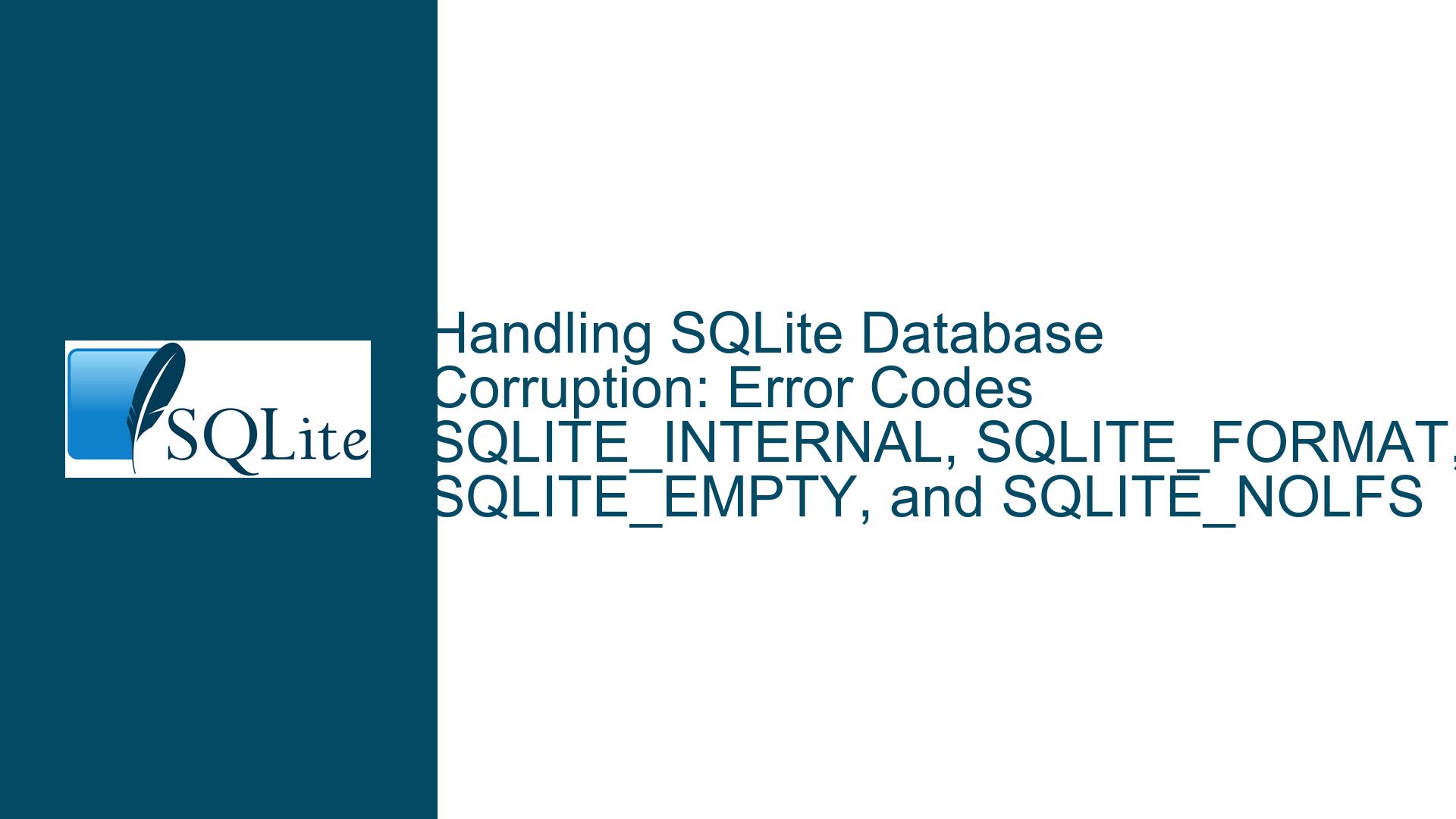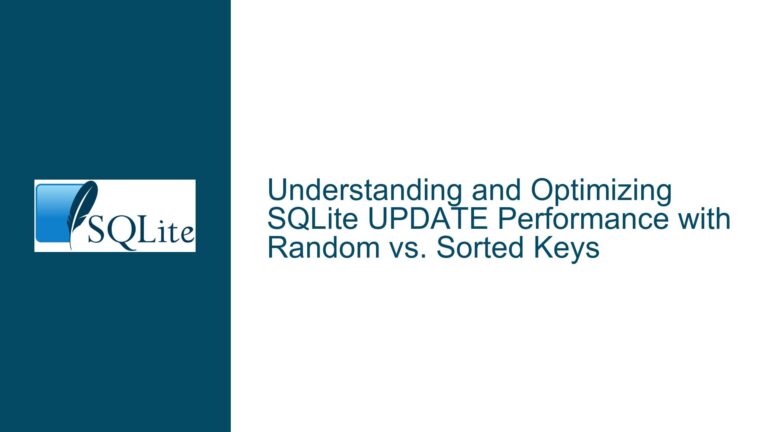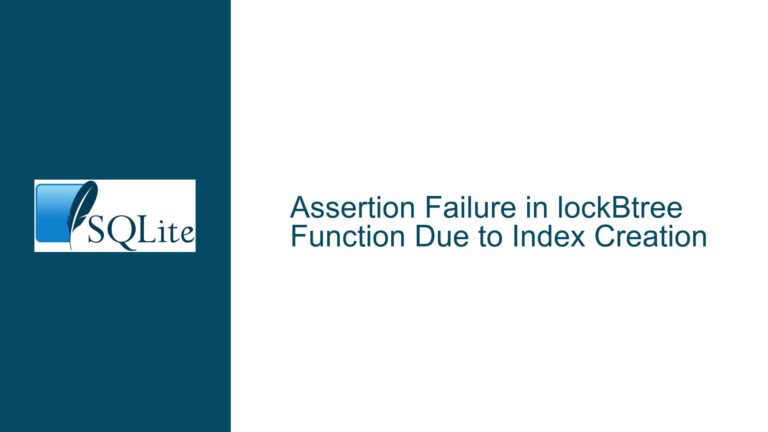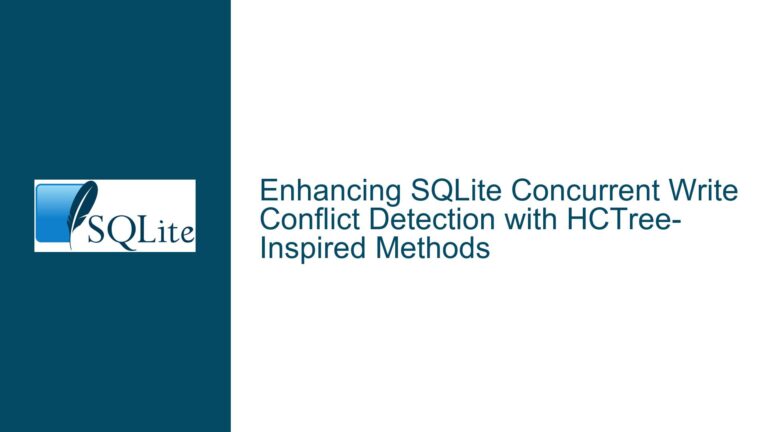Handling SQLite Database Corruption: Error Codes SQLITE_INTERNAL, SQLITE_FORMAT, SQLITE_EMPTY, and SQLITE_NOLFS
Understanding SQLite Database Corruption and Associated Error Codes
SQLite is a robust, lightweight, and widely-used database engine, but like any software, it is not immune to issues such as database corruption. Corruption can manifest in various ways, and SQLite provides specific error codes to help diagnose these problems. The error codes SQLITE_INTERNAL, SQLITE_FORMAT, SQLITE_EMPTY, and SQLITE_NOLFS are particularly indicative of database corruption or other serious issues. Understanding these error codes, their causes, and how to address them is crucial for maintaining data integrity and ensuring the reliability of your application.
SQLITE_INTERNAL typically indicates an internal logic error within SQLite itself, which is rare but can occur due to bugs in the SQLite library or issues with the underlying system. SQLITE_FORMAT suggests that the database file format is unrecognized or invalid, often due to corruption or an incompatible version of SQLite. SQLITE_EMPTY is returned when a database file is empty or contains no valid data, which can happen if the file was not properly initialized or was truncated. SQLITE_NOLFS indicates that the platform does not support large files, which can prevent SQLite from operating correctly on databases that exceed certain size limits.
These error codes are not just random failures; they are symptoms of deeper issues that need to be addressed. Ignoring these errors or simply recreating the database without understanding the root cause can lead to recurring problems and potential data loss. Therefore, it is essential to approach these errors methodically, diagnosing the underlying issues and implementing solutions that prevent future occurrences.
Diagnosing the Root Causes of SQLite Database Corruption
Database corruption in SQLite can stem from a variety of sources, ranging from software bugs to hardware failures. Identifying the root cause is critical to implementing an effective solution. One common cause of corruption is improper handling of the database file by the application. For example, if the application writes to the database file without proper synchronization or uses multiple connections to the same database without appropriate locking mechanisms, it can lead to inconsistencies and corruption.
Another potential cause is file system issues. If the file system on which the database resides is unreliable or experiences errors, it can result in corrupted database files. This is particularly common in environments with frequent power outages or unstable storage media. Additionally, bugs in the SQLite library or the underlying operating system can also lead to corruption, although these are less common.
The error codes SQLITE_INTERNAL, SQLITE_FORMAT, SQLITE_EMPTY, and SQLITE_NOLFS provide clues about the nature of the corruption. For instance, SQLITE_FORMAT suggests that the database file may have been overwritten or damaged in a way that makes it unrecognizable to SQLite. SQLITE_EMPTY indicates that the file may have been truncated or not properly initialized, while SQLITE_NOLFS points to limitations in the file system that prevent SQLite from handling large files.
To diagnose the root cause, it is important to examine the environment in which the database operates. This includes reviewing the application code for potential issues, checking the file system for errors, and ensuring that the SQLite library and operating system are up to date. Additionally, running diagnostic tools such as the PRAGMA integrity_check command can help identify inconsistencies in the database.
Comprehensive Troubleshooting and Solutions for SQLite Database Corruption
When dealing with SQLite database corruption, a systematic approach is essential to ensure that the issue is resolved effectively and that future occurrences are prevented. The first step is to capture and analyze the error codes. Instead of simply recreating the database, it is important to log the error codes and use them to guide the troubleshooting process. This involves examining the application logs, checking the database file for signs of corruption, and running diagnostic commands such as PRAGMA integrity_check.
If the PRAGMA integrity_check command returns errors, it indicates that the database is corrupted and needs to be repaired. In some cases, it may be possible to recover data from the corrupted database using tools such as the SQLite Recovery Tool or by exporting the data to a new database. However, if the corruption is severe, it may be necessary to restore the database from a backup.
Preventing future corruption requires addressing the root causes identified during the diagnosis. This may involve modifying the application code to ensure proper handling of the database file, implementing robust error handling and recovery mechanisms, and using reliable storage media. Additionally, it is important to regularly back up the database and test the backups to ensure that they can be restored in the event of a failure.
For error codes such as SQLITE_NOLFS, which indicate limitations in the file system, it may be necessary to upgrade the file system or use a different storage solution that supports large files. In some cases, it may also be possible to optimize the database to reduce its size and avoid hitting file system limits.
In conclusion, handling SQLite database corruption requires a thorough understanding of the error codes, a methodical approach to diagnosing the root causes, and a comprehensive strategy for troubleshooting and prevention. By following these steps, you can ensure the integrity and reliability of your SQLite databases and avoid the pitfalls of data loss and recurring corruption.






